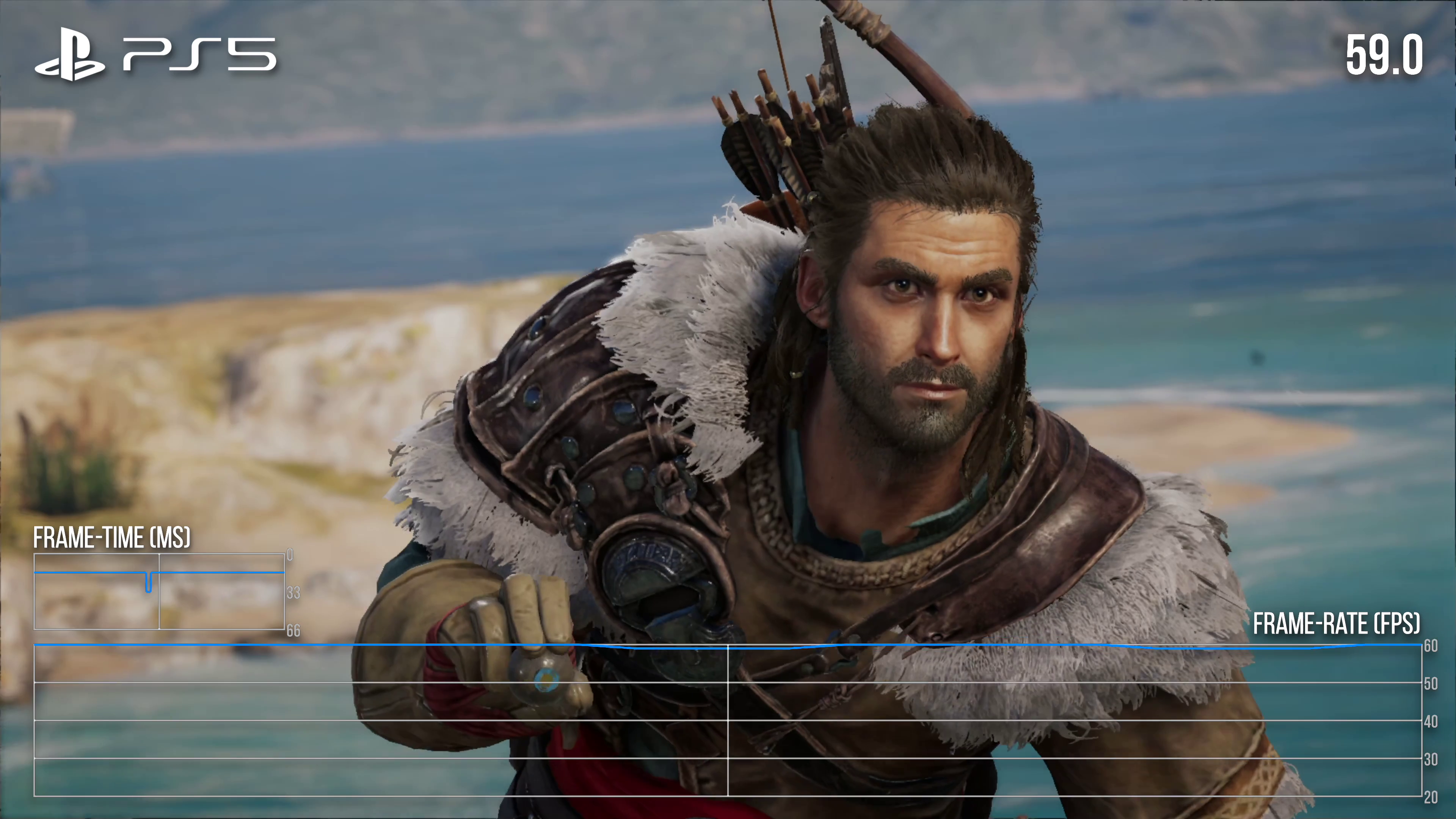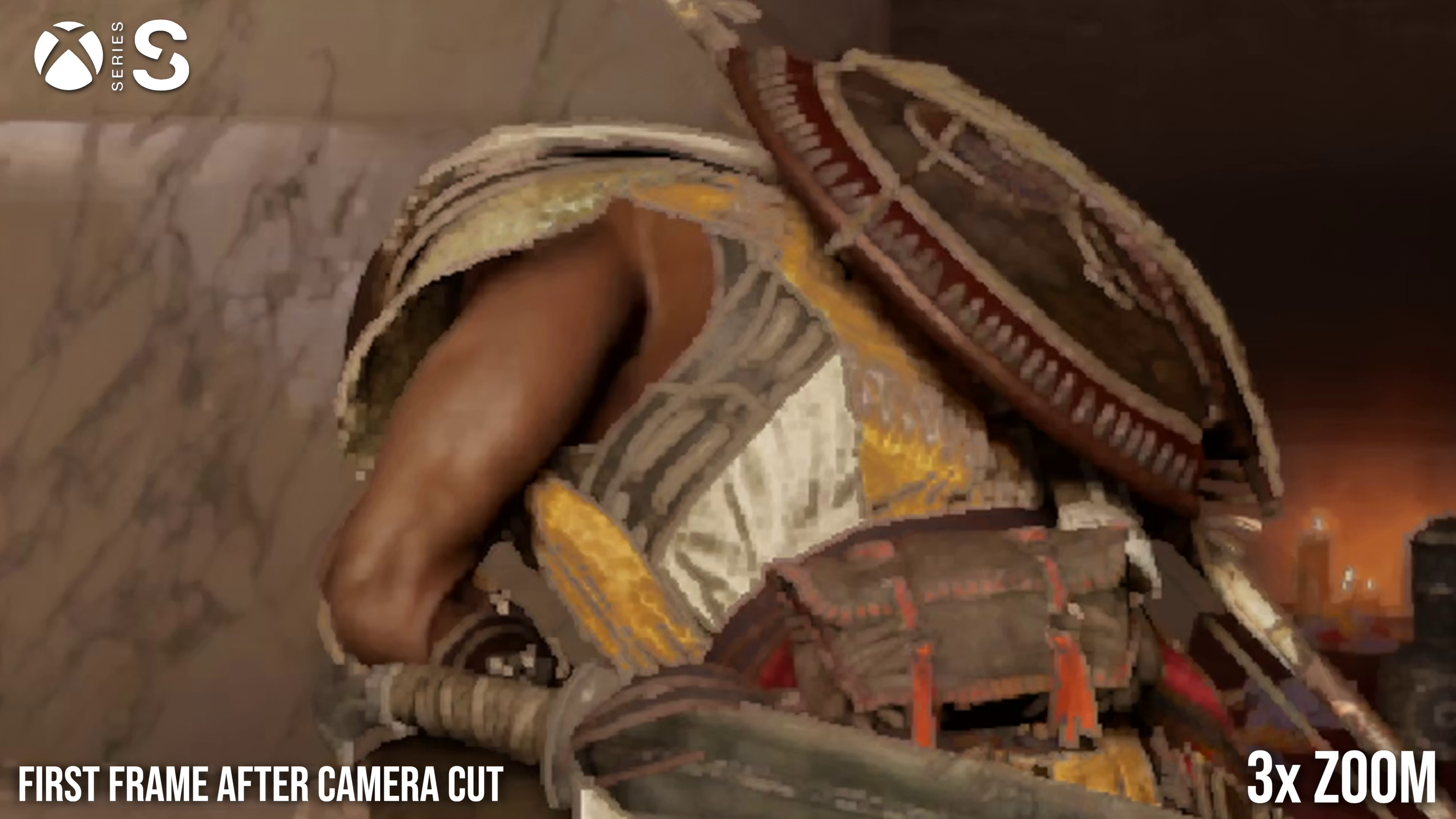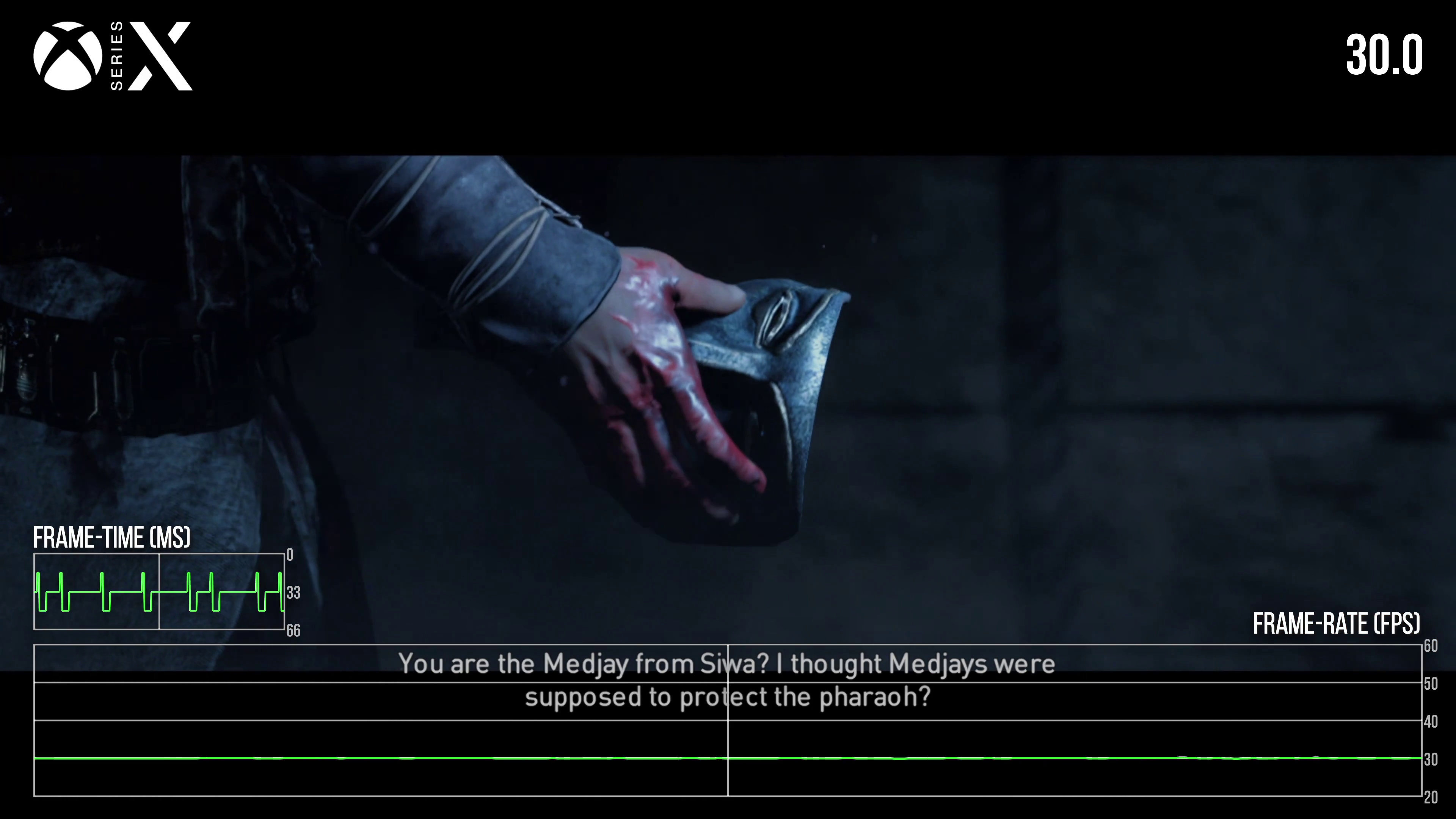Going back to test these 2017/2018 releases, Origins and Odyssey still visually impress. Lighting is beautifully saturated, with strong volumetrics and great global illumination, while while cutscenes feature a solid depth of field that cascades into beautiful bokeh shapes, all aided by a stable temporal anti-aliasing (TAA) that gives the titles a clean, filmic quality. Even against contemporary open-world titles, there’s little to complain about - perhaps some spotty texture work in places, but that’s a minor blemish on an otherwise spotless work by the developers at Ubisoft.
The move from 30 to 60fps is the headline feature here, and it is delivered with surprising reliability. In most circumstances, Series S, X and PS5 all hug that 60fps line perfectly, without any dips or deviations. There are some exceptions though, and curiously most of them apply to all current-gen machines, from the powerful PS5 and Series X to the more constrained Series S.
The first performance issue is in these games’ real-time cutscenes. Most obviously, a single frame is duplicated on each camera cut, producing a slight stutter. This was also present in the last-gen versions and is possibly intentional - showing a duplicate frame to the player before a camera cut allows you to buffer a frame in advance to generate the necessary information for TAA, so the frame after the camera cut can have high-quality AA instead of looking aliased. Judging from the results here it’s not clear that’s what’s going on though, as frames after camera cuts look raw and take several frames to clean up properly. There are also some more obvious outright problems, like the opening cutscene in Origins running at 50 to 55fps on all platforms - but I didn’t see other cutscenes in either game exhibit this level of performance.
Secondly, some elements fail to update at a full 60fps. Some of the physics animations in Origins stand out - the cloth animations while riding camels run at half-rate for instance, as do the cloth animations for banners and certain NPCs. The surface normal map on water in Origins also seems to update at half-rate. We do see these sorts of issues in other 60fps patches or system-level boosts as well, as some elements are set to run at a certain refresh level in the original code, and applying a tweak to boost the overall framerate won’t improve those elements.
Thirdly, the games’ pre-encoded cutscenes still run at 30fps, which contrasts against the 60fps refresh delivered elsewhere and takes you out of the experience slightly. Annoyingly, some of the pre-encoded cutscenes run with truly awful frame-pacing problems as well, producing an almost unbelievable level of stutter, though thankfully most cutscenes are real-time.
Finally, there are some occasional performance issues in combat. The opening sequence of Odyssey, which depicts a huge battle with many dozens of characters, was the most obvious culprit in my testing. This is a demanding sequence and does drop frames on all systems at times. Most combat elsewhere runs without a hitch, though it’s possible that larger combat sequences later in these titles could exhibit similar problems.
There are also some platform specific issues. Series S runs Odyssey’s real time cutscenes at 30fps, for instance, which is a little odd given that cutscenes in Origins are 60fps. Series X also generally suffers from a bit more from performance-related drops than other systems. I noticed a handful of occasions where the system would suffer frame-rate drops when other consoles didn’t, though this was mostly relegated to cutscenes and gameplay is largely unaffected.
Though that is a long list of minor issues, really in practice these are successful 60fps upgrades. Outside of some minor animation quibbles gameplay runs very well, and the cutscene annoyances are pretty easy to overlook. Moment-to-moment, current-gen consoles now run both games at a solid 60fps - and that delivers a massive improvement to the feeling of combat, which goes from a choppy 30fps on last-gen machines with no motion blur whatsoever to 60fps combat animations with much more temporal detail. Side-by-side, this is clearly a big upgrade, and these titles benefit enormously from the doubling of framerate.
Though the 60fps update does come with certain caveats, the results are solid - but have the visuals been changed at all? No. I tested the games in a variety of conditions and the underlying visual settings seem identical to the last-gen versions. No surprises there, but there are some interesting results in terms of visual clarity. These are patches to the old versions of the game, after all, which puts some limitations on how these versions function. Essentially, each current-gen machine inherits its resolution range from the last-gen code. All versions use dynamic resolution, but the top-end figure depends on the platform - and there is a wide divergence here.
Series X pulls off a full 4K at maximum, hitting a full 3840x2160 in light content, while PS5 appears to top out at 2880x1620 and Series S maxes out at 1920x1080. Series X is derived from One X, PS5 from PS4 Pro, and Series S from Xbox One. These seem to be the maximum figures available on last-gen machines - the pre-patch PS4 version running on PS5 also only reaches 1620p, for instance. I managed to find a lower bound of 1440p on Series X, 1152p on PS5, and 792p on Series S, though it’s likely they could go lower under some circumstances. In general, Series X mostly renders around 1728p or so, PS5 is typically at 1440p or somewhat below, and Series S mostly hovers in the 900p - 1008p range. Cutscenes tend to feature lower resolution numbers than gameplay, particularly in cutscenes that heavily use depth of field.
In practice, the three consoles form a sort of neat progression, with a roughly even difference in clarity as you step between the three versions. Series S looks a bit blurry, PS5 is more detailed and stable but still slightly rough, and Series X usually looks pretty 4K-like, with plenty of fine detail. If I had to guess, I’d say that some of these differences probably stem from differences in that maximum resolution figure, as the TAA upsampling that seems to be in effect here works better when sampling into a higher resolution canvas.
The difference between PS5 and Series X is a bit unusual - we’d typically expect the two machines to be a bit closer, but the much lower top-end resolution on PS5 compromises the effort somewhat.
For fans of the series, these new updates are a great excuse to revisit the worlds of Origins and Odyssey. Both games hold up very well, even now, and the 60fps bump hugely improves animation fluidity and gameplay response. While eighth-gen rendering paradigms are old hat at this point, I came away very pleased with the experience on offer - and really, these patches come close to what you might expect from a full current gen console release.
Assassin’s Creed is an extremely popular game series, and a new title is surely on the horizon, given the vintage of AC Valhalla. That game will hopefully take full advantage of current-gen console technology, but for now these upgraded last-gen editions are satisfyingly enhanced. This is an excellent opportunity to dive into some of the most convincingly-realised open worlds in video games.



